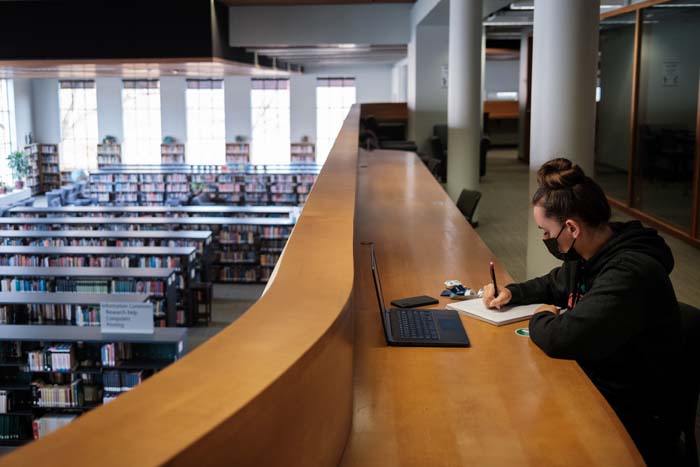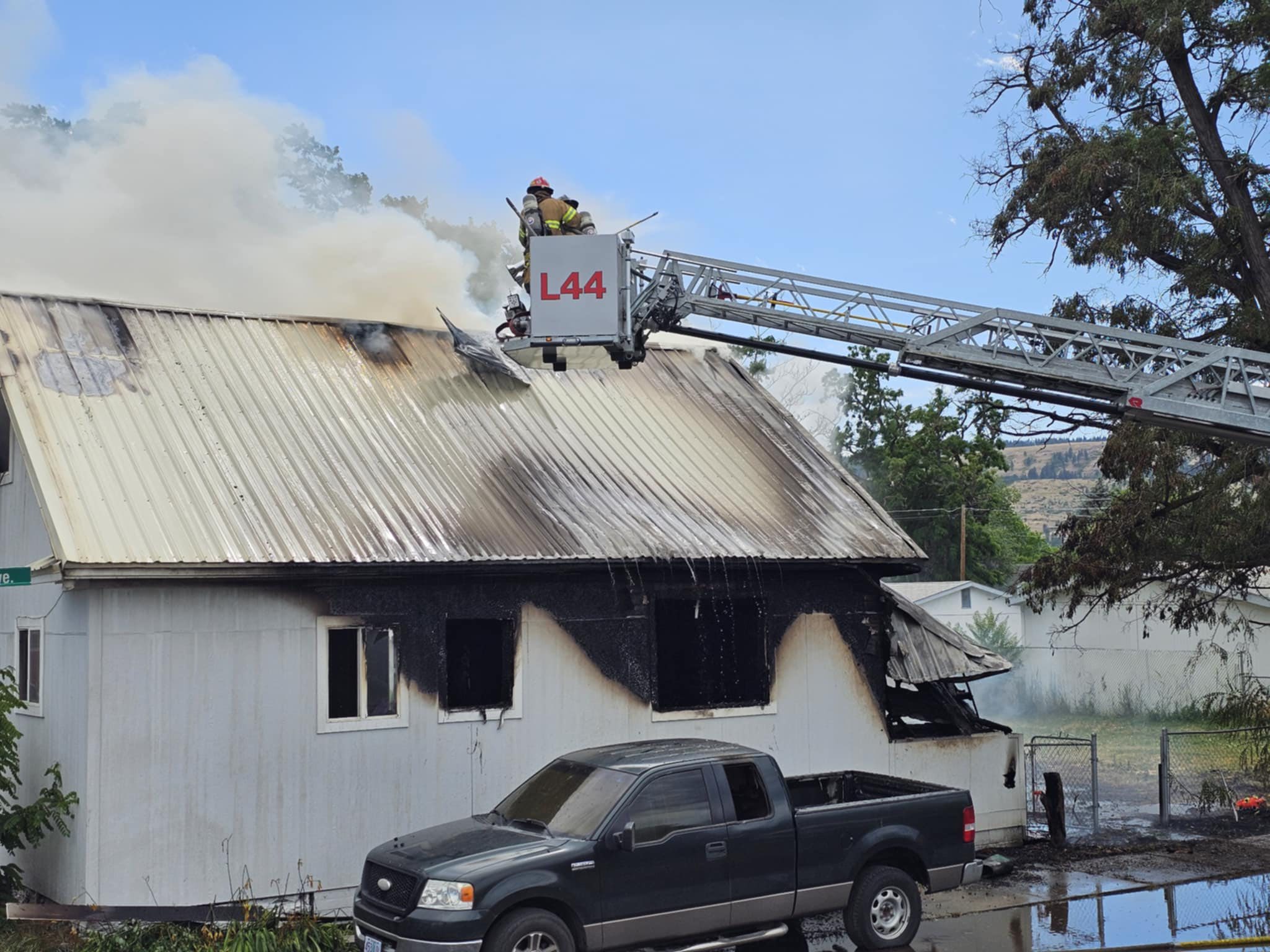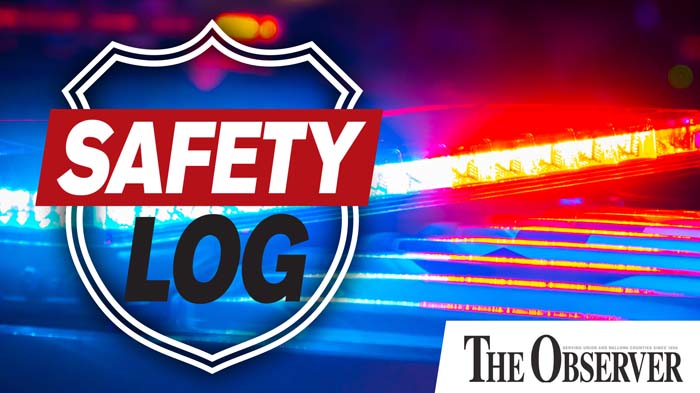Eastern Oregon University relies on campus-wide effort to endure COVID-19 pandemic
Published 7:00 am Tuesday, February 8, 2022

- Hanna Saunders, an accounting student at Eastern Oregon University, studies in the school’s library on Oct. 28, 2021.
LA GRANDE — Eastern Oregon University’s all-hands-on-deck approach is getting the school through the COVID-19 pandemic.
The La Grande university has upped its testing and vaccine availability in the midst of another COVID-19 spike early in 2022. While cases at the school have seen an uptick, mirroring the effects of the omicron variant across the state, university officials have been prudent in sustaining an in-person learning experience for students.
“We feel like through all of the methods we’re using, we’ve been able to keep ourselves open,” said Lacy Karpilo, vice president for student affairs. “I think we’ve demonstrated that we can create an environment where we’re limiting the spread, but still able to engage with each other.”
Karpilo noted that the university has been working closely with the Center for Human Development and collaborating and sharing results with the Oregon Health Authority throughout the pandemic. The two health organizations have played a significant role in the university’s decision-making as it has sought to create the safest learning environment. The goal since the start of the pandemic has been to sustain in-person learning at the university — efforts among students and staff have been made across campus to achieve this goal and limit the spread.
“They recommended that we not go remote. They recommended us to continue doing what we’re doing, as well as up our masks,” Karpilo said. “They really felt that the safest place for people to be is a classroom with masks and distancing, as well as what we’re doing on our campus to stay safe.”
A nationwide trend among university students was an uptick in COVID-19 following winter break — students and staff typically travel to visit family and friends for the holidays. Eastern saw a significant increase in cases after the break, reporting 110 cases from off-campus students and 25 among on-campus students during January. Throughout the same time frame, 19 employees recorded positive test results.
The uptick reflected county and state numbers in early January, when Union County recorded just under 37 cases per day. In the two-week period from Jan. 17 through Jan. 30, the county averaged roughly 52 cases per day.
Tim Seydel, EOU’s vice president for university advancement, and Karpilo stated the university upped testing following winter break, to be extra cautious in identifying any cases and ensuring the campus was still a safe place. While numerous schools nationwide transitioned into post-holiday classes with several weeks of online learning, Seydel noted that Eastern continued its focus on providing safe in-person education.
“Statewide, schools saw a significant uptick in numbers when they started testing at the beginning of term. There was this immediate statewide trend,” he said. “That is why we want to test these students so that we can get them the help they need or get them into isolation and quarantine so we can help reduce it.”
Emphasizing vaccinations
The university staff is noticing that the omicron variant is having a much different effect on COVID-19 trends on campus compared to previous strands. In the fall, many students who got tested when they were sick ended up not having COVID-19, whereas now most students reporting common symptoms to the university’s student health center are testing positive.
Karpilo noted that while omicron symptoms may be more mild, cutting the spread is still of the utmost importance in avoiding hospital overload. Due to this trend in hospitals nationwide, Eastern continues to emphasize the vaccine and booster shots to faculty and students.
“That’s the way for us to really get to the other side of this pandemic, having as many people as possible vaccinated and boostered,” Karpilo said. “But we are also taking it from a perspective of education and care. We are treating all of our students respectfully regardless of vaccination status.”
Prior to the vaccines, all students and staff were tested upon returning to campus, and the university continues to test unvaccinated individuals at the beginning of each term.
The university also hosted testing clinics every Tuesday and Thursday throughout the month of January. In the case of a positive result, after an interval of time the individual is tested again to be extra cautious — two consecutive positives are still tallied on the school’s COVID-19 dashboard, contributing to a test positivity rate of 11.2% through Sunday, Feb. 6.
Prior to the pandemic, Eastern and most higher learning institutions were already offering the option of online learning. When students or faculty members test positive for the coronavirus or are experiencing symptoms, the ability to shift to online education allows the learning process to go uninterrupted — both online and on the classroom.
“If there’s a positive in a class, our focus has been to continue having the in-person class,” Seydel said. “Our push has been to ensure that students have the opportunity to attend in-person classes.”
Both Seydel and Karpilo noted that by this point in the pandemic, students and staff are generally being extra cautious when it comes to COVID-19. The university’s health center has seen many students come in and check for COVID-19, even if they just have a common cold.
“Students are a lot more aware of the spread of illness, so they’re being very smart about it,” Seydel said. “The awareness among students is neat to see.”
Vaccine mandate
When Eastern Oregon University announced its vaccine mandate on June 3, 2021, the decision was met with opposing views. Seydel noted that the initial reaction by many was the misconception that unvaccinated individuals could not go to school or work at Eastern. He explained that the mandate was a precaution toward the goal of maintaining a safe environment for everyone, regardless of vaccination status.
“We’ve always held up that we need to create a safe and healthy environment for everybody who interacts with EOU — students, faculty and staff,” he said. “Whatever we need to do to ensure our students can achieve academic success, we have focused on.”
As of the university’s latest vaccination status report, on Oct. 30, the in-person vaccination rate among Eastern Oregon University students was 75.7%. The in-person exemption rate was 24.2%. For employees, 80.1% were reported as vaccinated and 17.7% received an exemption.
As COVID-19 case numbers in the omicron spike begin to plateau, Eastern is aiming to continue its protocols to ensure the campus is a safe learning environment.
“This has really been a group effort at EOU. All faculty, staff and students, it really has been a group effort,” Karpilo said. “Everyone on this campus has had to step up to get us through this. I think it’s just a testament to the dedication of our faculty and staff, as well as who our students are.”









